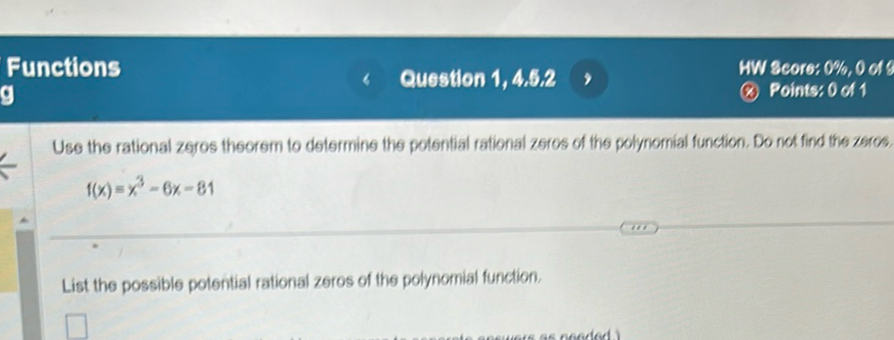Full solution
Q. Use the rational zeros theorem to determine the potential rational zeros of the polynomial function. Do not find the zeros.List the possible potential rational zeros of the polynomial function.
- Identify Terms: Identify the constant term and the leading coefficient of the polynomial. The constant term in the polynomial is , and the leading coefficient (the coefficient of the highest power of ) is .
- List Factors: List the factors of the constant term and the leading coefficient.The factors of the constant term are , , , , .The factors of the leading coefficient are .
- Apply Theorem: Apply the Rational Zeros Theorem.The Rational Zeros Theorem states that any rational zero of the polynomial function can be expressed in the form , where is a factor of the constant term and is a factor of the leading coefficient.
- List Potential Zeros: List the potential rational zeros.The potential rational zeros are all the possible fractions formed by dividing the factors of the constant term by the factors of the leading coefficient. Since the leading coefficient is , the potential rational zeros are simply the factors of the constant term.The potential rational zeros are , , , , .

